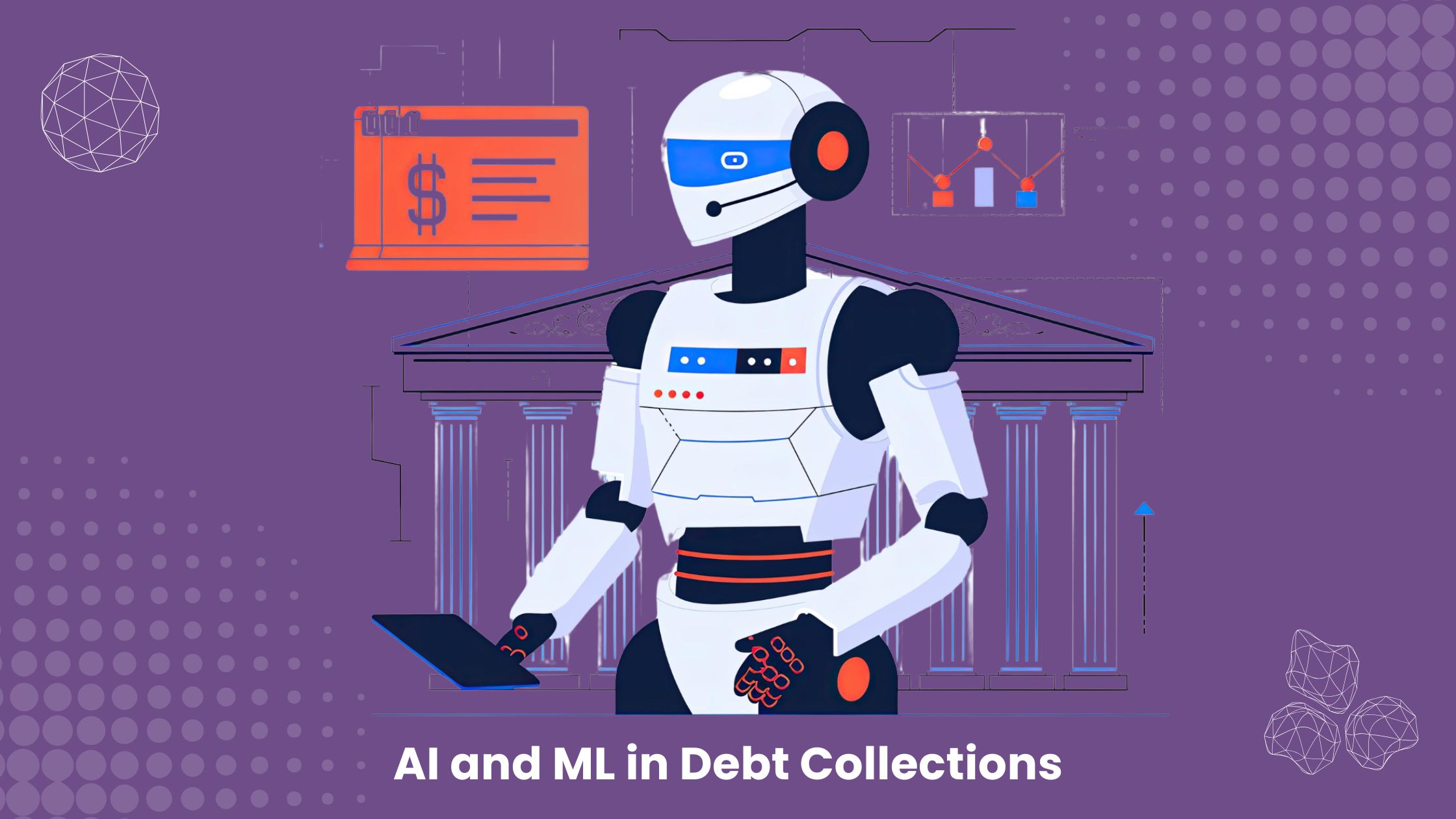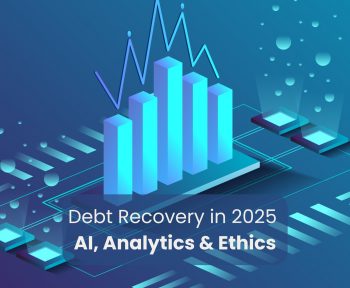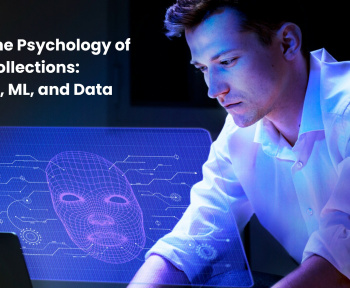In recent years, the debt collections industry has undergone a remarkable transformation. At the heart of this change are two powerful technologies: Artificial Intelligence (AI) and Machine Learning (ML). Cutting-edge innovations based on these are reshaping how banks, NBFCs, Fintechs and ARCs approach debt recovery and gain a unique mix of improved efficiency, enhanced customer experience, and higher profitability.
The AI revolution in debt collections
Gone are the days of relying solely on human effort driven and generalized collection strategies. Today’s most successful debt recovery operations leverage AI and ML extensively to analyze vast datasets, identify patterns, and make real-time insights based decisions. The impact is significant.
- A recent McKinsey report found that Generative AI in debt collections could slash operational costs by 40%.
- The same study projected a 10% increase in debt recoveries and up to 30% boost in customer satisfaction.
But how exactly are AI and ML transforming the debt collections landscape? Let’s dive in.
1. Predictive Analytics: The crystal ball of collections

Imagine having a crystal ball that could tell you which accounts are most likely to default or which customers will respond best to specific communication channels. That is essentially what AI-powered predictive analytics brings to the table.
By crunching historical data, these sophisticated algorithms can:
- Forecast payment behavior with uncanny accuracy
- Flag high-risk accounts before they become problematic
- Tailor collection strategies aligned to different customer segments
This foresight allows collection teams to work smarter and be in sync with dynamic scenarios, focusing their efforts where they’re most likely to pay off.
2. Chatbots and Virtual Assistants: 24/7 Digital debt collectors

AI-powered chatbots and virtual assistants are the tireless workers of the modern debt collection world. They’re on the job around the clock, handling:
- Routine inquiries that don’t require human intervention
- Guiding customers through self-service payment options
- Providing instant answers to FAQs
By automating these interactions, human agents can focus on complex cases that truly need human intervention. The result? Improved efficiency across the board.
3. Natural Language Processing: The art of understanding

One of the most exciting applications of ML in debt collections is Natural Language Processing (NLP). This technology brings a new level of sophistication to customer interactions by:
- Analyzing customer sentiment in written and verbal communications
- Flagging potential compliance issues in collection scripts
- Automatically extracting and updating key information from customer conversations
With NLP, collection agencies can ensure more empathetic and compliant communication while also gleaning valuable insights from every interaction.
4. Real-Time Insights: The power of now

In the fast-paced world of debt collections, having up-to-the-minute information can make all the difference. AI-powered analytics process massive datasets in real-time, offering valuable insights into:
- Which debtors are most likely to respond to outreach
- The effectiveness of different collection strategies
- Emerging trends that could impact recovery rates
This real-time intelligence allows collection teams to pivot quickly, adjusting their approach for optimal results.
5. Personalization: The key to debtor engagement

Gone are the days of one-size-fits-all collection messages. AI enables a level of personalization previously unimaginable in debt collections. By analyzing a debtor’s history, payment behavior, and communication preferences, AI can tailor:
- The timing of outreach attempts
- The most effective communication channel
- The tone and content of messages
This personalized approach not only improves the chances of repayment but also helps maintain positive customer relationships—a crucial factor in today’s customer-centric world.
The SaaS advantage: Why cloud-based debt collection platforms are the future
As the benefits of AI and ML in debt collections become increasingly clear, many financial institutions are turning to SaaS-based debt collection platforms. Here’s why:
1. Quick Setup, Minimal Hassle: Unlike traditional systems that require complex installations, cloud-based solutions can be up and running in no time.
2. Scalability on Demand: Whether you’re managing 100 accounts or 10,000, SaaS platforms grow with your business.
3. Cost-Effective and Time-Saving: Pay only for what you use, and let automation handle routine tasks, freeing up your team for high-value activities.
4. Real-Time Collaboration: Cloud-based access means your entire team stays in sync, improving coordination and performance.
5. Bulletproof Compliance: Automated compliance checks reduce the risk of costly regulatory missteps.
The future is here: Are you ready?
The integration of ML and AI in debt collections isn’t just a trend – it’s a seismic shift in how the industry operates. These technologies offer a powerful combination of efficiency, personalization, and strategic insight that’s transforming debt recovery.
For banks, NBFCs, and financial institutions looking to stay competitive, adopting AI-driven, SaaS-based solutions isn’t just an option—it’s a necessity. These platforms amplify the benefits of AI and ML, offering scalability, cost savings, and real-time collaboration that keep businesses agile in a rapidly evolving landscape. The future of debt collections is smarter, more efficient, and surprisingly more human.
Ready to revolutionize your debt collections? Explore our AI-powered, SaaS-based debt collection platform and see the difference for yourself.
FAQs
1. How is Machine Learning (ML) used in debt collections?
Machine Learning (ML) is transforming debt collections by enabling predictive analytics, personalization, and real-time decision-making. By analyzing vast datasets, ML helps identify high-risk accounts, predict payment behaviors, and tailor collection strategies to individual debtors, significantly improving recovery rates.
2. What role does AI play in debt collections?
AI in debt collections automates routine tasks through chatbots and virtual assistants, offering 24/7 support. It also enhances customer interactions using Natural Language Processing (NLP), which improves the empathy and compliance of communications while extracting key insights from conversations.
3. Can ML and AI reduce the costs of debt collection operations?
Yes, AI and ML can reduce operational costs by automating repetitive tasks, improving efficiency, and enhancing decision-making. A McKinsey study showed that integrating AI can slash operational costs by 40%, boosting debt recovery and customer satisfaction rates.
4. How does AI-driven predictive analytics improve debt recovery outcomes?
AI-powered predictive analytics use historical data to forecast debtor behaviors with high accuracy. This allows debt collectors to proactively target accounts likely to default, optimize collection strategies, and ultimately improve recovery rates.
5. What advantages do SaaS-based debt collection platforms offer when powered by AI and ML?
SaaS-based debt collection platforms provide scalability, real-time collaboration, and automated compliance. With AI and ML, these platforms enhance efficiency by automating routine tasks, providing real-time insights, and enabling personalized debtor engagement, all while reducing operational costs.






